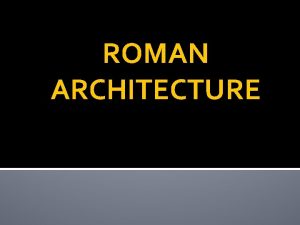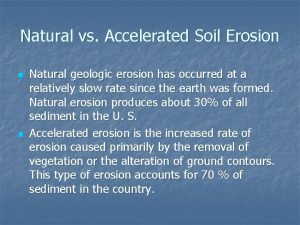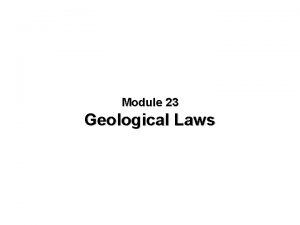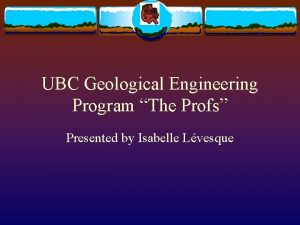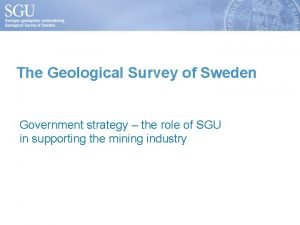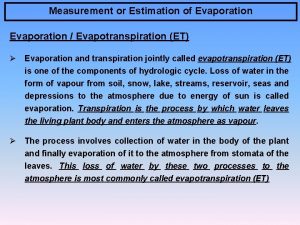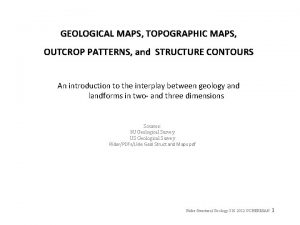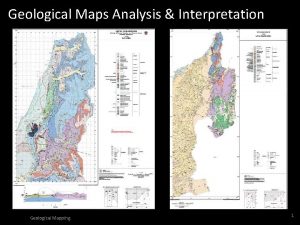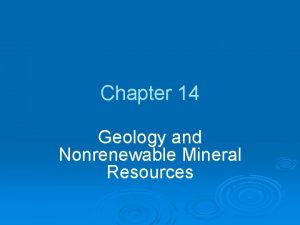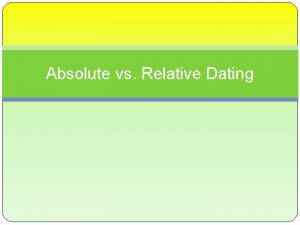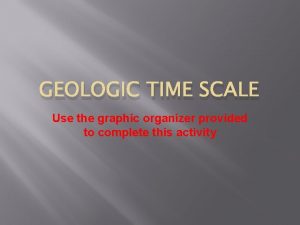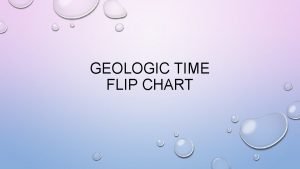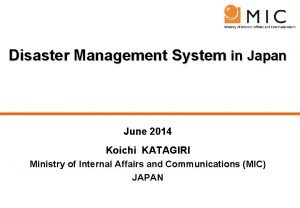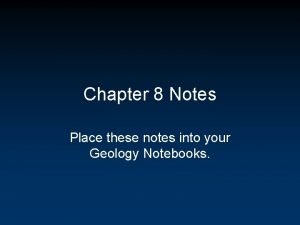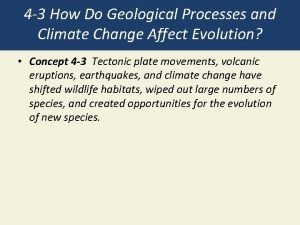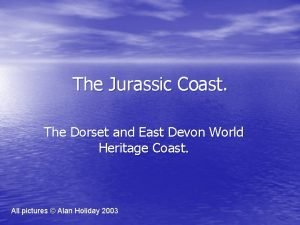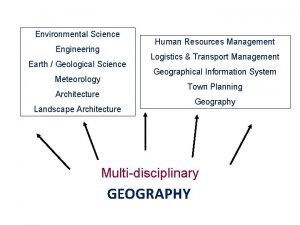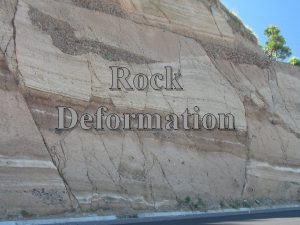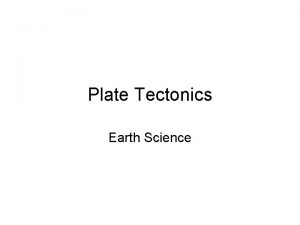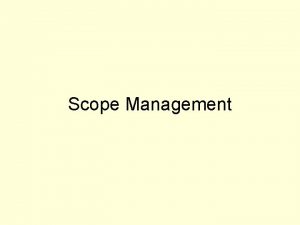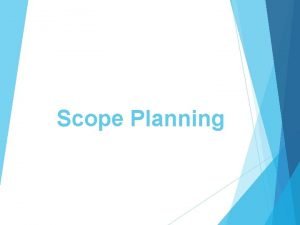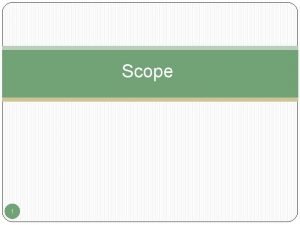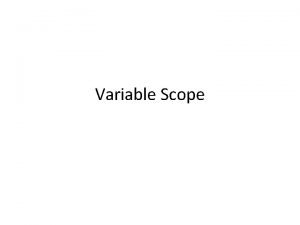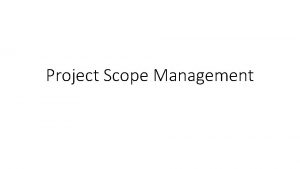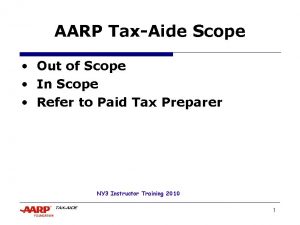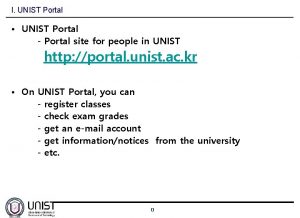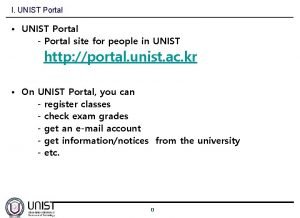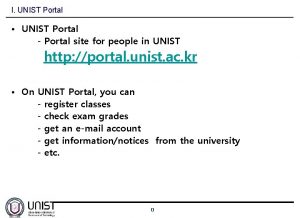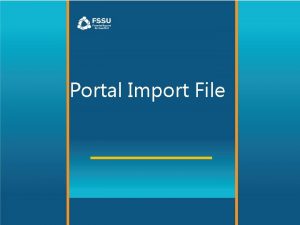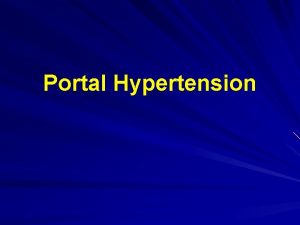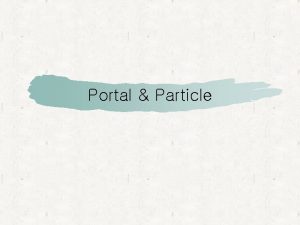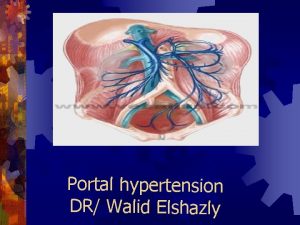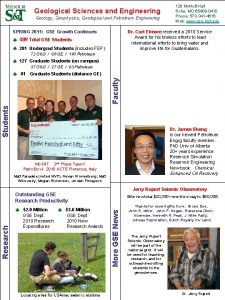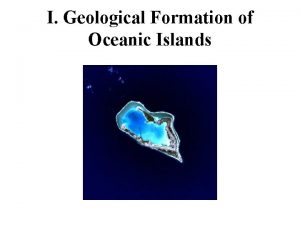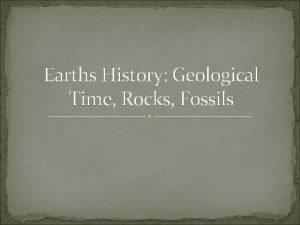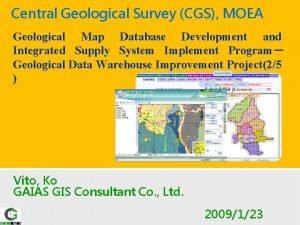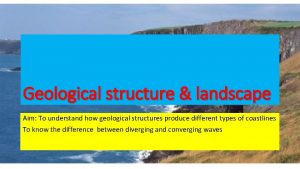Au Scope 3 D Geological Models Portal http




















- Slides: 20

Au. Scope 3 D Geological Models Portal http: //geomodels. auscope. org Vincent Fazio | 4 th October 2019 Australia’s National Science Agency

What is it? • A website that enables users to explore geological models in 3 D • Models are sourced from sets of GOCAD Object files • Knits together geological data and images from various online sources • It is currently a ‘work in progress’ • Open source • FAIR data principles (Findable, Accessible, Interoperable, and Reusable) (http: //wilkinsonlab. info/node/FAIR) • Part of the Au. Scope’s AVRE (Au. Scope Virtual Research Environment) program (https: //www. auscope. org. au/programs) • Found as an app in “Au. Scope App Store” (http: //avre. auscope. org/store)

Part 1: The Front End

Front End Technology Stack Three. JS (https: //threejs. org) itowns (http: //www. itowns-project. org/) Angular (https: //angular. io/)

Front End Features • Demonstration mode • Rotates the model using Three. JS animation frames • 3 D virtual sphere view controller • If the mouse is moved within the bounds of the sphere the object is rotated as if you are spinning a virtual sphere/trackball • If the mouse is outside the sphere the model is rotated in the screen plane • This has the advantage that it can rotate the object around all three axes without needing to use the keyboard or extra mouse keys. • ‘itowns’ javascript library is used to display model in consistent CRS (coordinate reference system) • OCG WMS layers can also displayed via ‘itowns’ OGC (https: //www. opengeospatial. org/)

Virtual Sphere View Controller • Convert mouse co-ordinates to co -ordinates on a 3 D sphere, knowing the radius of the sphere. • This gives us the start and the end vector. • The rotational axis for the model is the cross product of start vector and end vector

Sidebar Controls Sidebar controls tour There are controls for: • • • Transparency Height offset Height scale Other functions: Highlight model part under mouse pointer • Zoom to model part • Hide/reveal model part or groups of model parts •

NVCL Boreholes • From National Virtual Core Library • Displays borehole data in 3 D • Uses information taken from: • OGC WFS (Web Feature Service) hosted by geological surveys of each state/territory • NVCL (National Virtual Core Library) services • Displays boreholes in colours according to mineral type • Can display a popup with detailed information about the selected point • Links to Metadata, Au. Scope Portal and WFS service

Links • Australian Stratigraphic Units Database (ASUD) • Au. Scope Portal • State/Territory Geological Survey WFS services ASUD (https: //asud. ga. gov. au/) (http: //portal. auscope. org. au)

Displays Volume Data • Data points are shown as X, Y, Z slices • Various types of data can be displayed, e. g. floating point as greyscale, integers displayed in colour using a colour table • 3 sliders to control X, Y, Z slice positions • Different properties can be overlaid and transparency controlled for each • Double click on a point to get its label and a data value

How does volume viewer work? • Downloads all volume data in compressed binary format • Each slice is represented as a double-sided image plane in Three. JS • As each slice is moved the image plane is reloaded with volume data from browser memory • Uses Three. JS ability to create wireframe models to draw the white lines surrounding the volume

Drag and drop GOCAD surface file

Part 2: The Back End

Back End Functions • Static files for the models and Angular UI are served using Apache web server • Boreholes and borehole data are created in real time via a python WSGI server: • GLTF files of NVCL boreholes via OGC 3 DPS • Borehole information via OGC WFS • WSGI service backed by SQLITE database • Drag and drop conversion also supported by WSGI service using ‘pyassimp’ library

Converting GOCAD files to 3 D model files • Written in Python • Command line scripts: • Convert GOCAD OBJECT files (TS, GP, PL, VS, VO) to COLLADA files • COLLADA files are converted to GLTF via ‘collada 2 gltf’ library • Volumes converted to GZIP • Where possible, large files are converted to PNG because of the limits of Web. GL in browser GLTF (https: //www. khronos. org/gltf/) COLLADA (https: //www. khronos. org/collada/)

Creating and converting GLTF files in real-time • Uses Python WSGI interface • Only works for smaller files (less than a few hundred k. B) • Uses ‘pyassimp’ to create the GLTF files for boreholes and the drag and drop feature

Back End Technology Stack • OWSLib (https: //github. com/geopython/OWSLib) • pyassimp (https: //github. com/assimp/tree/master/port/Py. Assimp) • SQLAlchemy (https: //www. sqlalchemy. org/) • pyproj (https: //github. com/jswhit/pyproj) • Pillow (https: //github. com/python-pillow/Pillow) • pycollada (https: //github. com/pycollada) • numpy (http: //www. numpy. org/) • diskcache (http: //www. grantjenks. com/docs/diskcache/) • collada 2 gltf (https: //github. com/Khronos. Group/COLLADA 2 GLTF)

Future There an enormous number of things that could be done: Small things: • Ability to convert more types of GOCAD object file (WELL & SGRID) • User can download selected parts of a model as a 3 D coordinate file • Many more user interface tools • Convert and display more models from various sources Big things: • Integrate more sources of geological and geographic data • Display all aspects of information model (extension to Geo. Sci. ML) • 3 D tiles for large scale models

Where’s the source code? Front End: https: //github. com/Au. Scope/geomodelportal Back End: https: //github. com/Au. Scope/geomodel-2 -3 dweb

Acknowledgements: Au. Scope Ltd (https: //www. auscope. org. au/) Thank you Mineral Resources Vincent Fazio Senior Engineer +61 3 9545 8780 vincent. fazio@csiro. au Numerous colleagues at CSIRO Geoscience Australia (https: //ga. gov. au) State and territory geological surveys (see geomodels website for more information) Paradigm Academic Software Program (http: //www. pdgm. com/affiliations/academi c-software-programs/) for SKUA/GOCAD software Australia’s National Science Agency
 Continental drift theory and plate tectonics theory
Continental drift theory and plate tectonics theory Roman architecture
Roman architecture Differentiate between geological and accelerated erosion
Differentiate between geological and accelerated erosion Unconformity
Unconformity J fred muir memorial scholarship in science
J fred muir memorial scholarship in science Geological map sweden
Geological map sweden Rohwers formula
Rohwers formula Outcrop patterns
Outcrop patterns Geological map interpretation
Geological map interpretation Geological processes
Geological processes Relative dating
Relative dating Earth history and geologic time graphic organizer
Earth history and geologic time graphic organizer Rubric for designing geological time scale
Rubric for designing geological time scale Geological disaster example
Geological disaster example Geological events
Geological events How do geological processes affect natural selection
How do geological processes affect natural selection Jurassic coast map
Jurassic coast map What do geological engineers invent
What do geological engineers invent Geological
Geological Faulting diagram
Faulting diagram Divergent boundary geological features
Divergent boundary geological features

